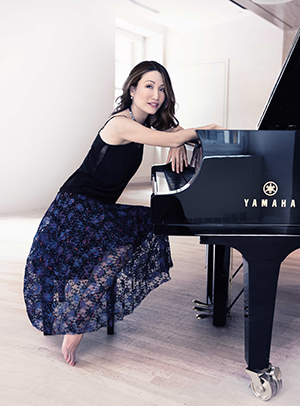by Nicholas Stevens

Her program likewise traced a circular path, from one 20th-century master’s response to violence to another. And in Lee, one finds a pianist whose approach suits all periods and styles. Her powerful sound may best be experienced in the round, lid off.
Gartner Auditorium proved a cozy home for the crowd that attended the recital, part of Cuyahoga Community College’s Classical Piano Series. In addition to communicating strong feeling at the keyboard, Lee was a charismatic speaker, explaining last-minute program changes and the contexts of the added pieces with concision and expertise.
As Lee explained, Janáček intended 1.X.1905 as a sonata in tribute to a slain activist, but scrapped first the finale and, later, the entire project. Pianists have gamely adopted the remaining two-part elegy ever since a copy emerged in 1924. Lee made the composer’s grief-induced indecision palpable, ratcheting from a murmur to a plea, then a roar. From an impossibly light final chord, Lee moved on to bring expansiveness to the second movement’s gestures. A series of melodies, played in double octaves, bestowed grace on the lost protestor, a Czech patriot in Janáček’s eyes.
Applause rightly followed Lee’s rendition of the first movement of Chopin’s Sonata in b-flat. She brought drama to a conflict-riven piece, allowing spiky figures in the left hand to stand in contrast to a strange, soft right-hand melody. Aspiring pianists might consult Lee on how to play octaves, given the strength she poured into those of the second movement. The third involved an epic contrast between the opening bars — flat in affect but choking up rhythmically — and the thundering three-chord motive that shook the instrument later. The finale found Lee on a musical putting green, exercising care so that the final clink would feel all the more valedictory.
Mozart’s Sonata in E-flat, K. 282, opens with arpeggios, here decanted like cool, crisp wine. The first dance in the two-part second movement had a spring in its step, the second a feistiness for all its relaxation of tempo. Bursts of higher volume in the third movement had the quality of shiny spots on a matte surface.
Few pieces of piano music have calm beauty quite like that of “Bruyères,” from Debussy’s Préludes, especially when Lee plays it; few have the diabolical sweep of “La vent dans la plaine,” a tornado in her hands. The exaggerated dance rhythms of “Minstrels” can prod pianists to ham it up, but Lee chose to give the piece an air of mystery. “La puerta del Vino” showcased her ability to play chords as jarring tears or smooth ripples in the musical fabric, according to local context.
Ravel’s La valse revisits the grand waltz from a time when perfumed ballrooms of yore had yielded to the Great War’s poisoned trenches. Many pianists shroud the piece’s opening minutes in a thick fog, revealing its explosive chaos only later. Not Lee, whose propulsive reading launched left-hand attacks like exploding shells. Prepared to question the relentless tempo, I changed my mind when her speed slackened for the first and only time: just before the end, when a shred of melody from early on pealed forth unaccompanied, a scream in the dark. Go hear Lee the next time she returns, hopefully soon: her recitals run gamuts and gauntlets, with singular power.
Published on ClevelandClassical.com December 16, 2019.
Click here for a printable copy of this article



